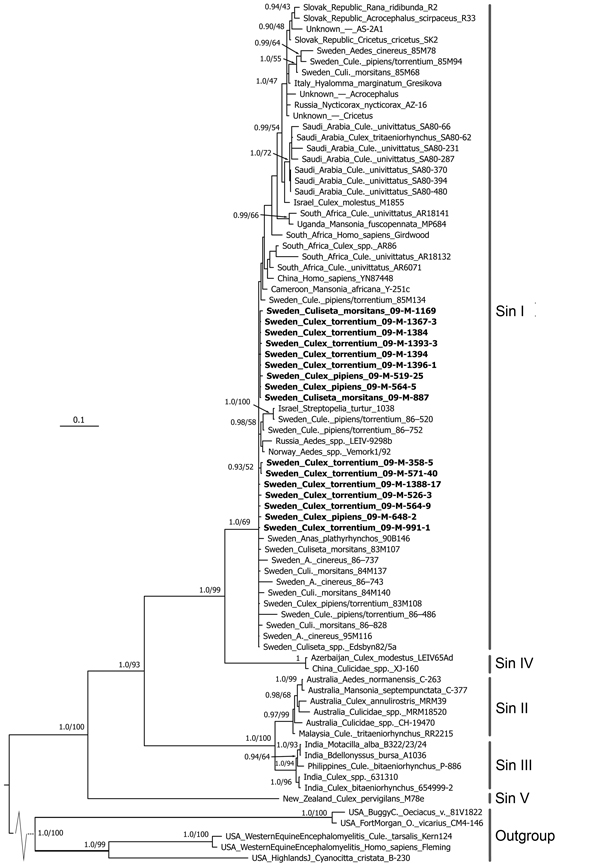Volume 21, Number 5—May 2015
Dispatch
Culex torrentium Mosquito Role as Major Enzootic Vector Defined by Rate of Sindbis Virus Infection, Sweden, 2009
Figure

Figure. Consensus tree of the partial E2 envelope glycoprotein gene for Sindbis virus constructed by using MrBayes (http://mrbayes.sourceforge.net/). The phylogram includes 16 Sindbis virus strains isolated from mosquitoes collected in central Sweden during July 13–September 13, 2009, against a background of all Sindbis virus strains previously sequenced in the same region. The tree shows that all new strains are of the Sindbis-I virus genotype. Boldface indicates strains isolated during this study. Labels on right indicate Sindbis virus genotypes. Support values at nodes are Bayesian posterior probabilities/Garli maximum-likelihood bootstrap support. Nodes without support values have Bayesian posterior probability of <0.9, and branches are collapsed at 0.5 posterior probability. Scale bar represents average number of substitutions per site.